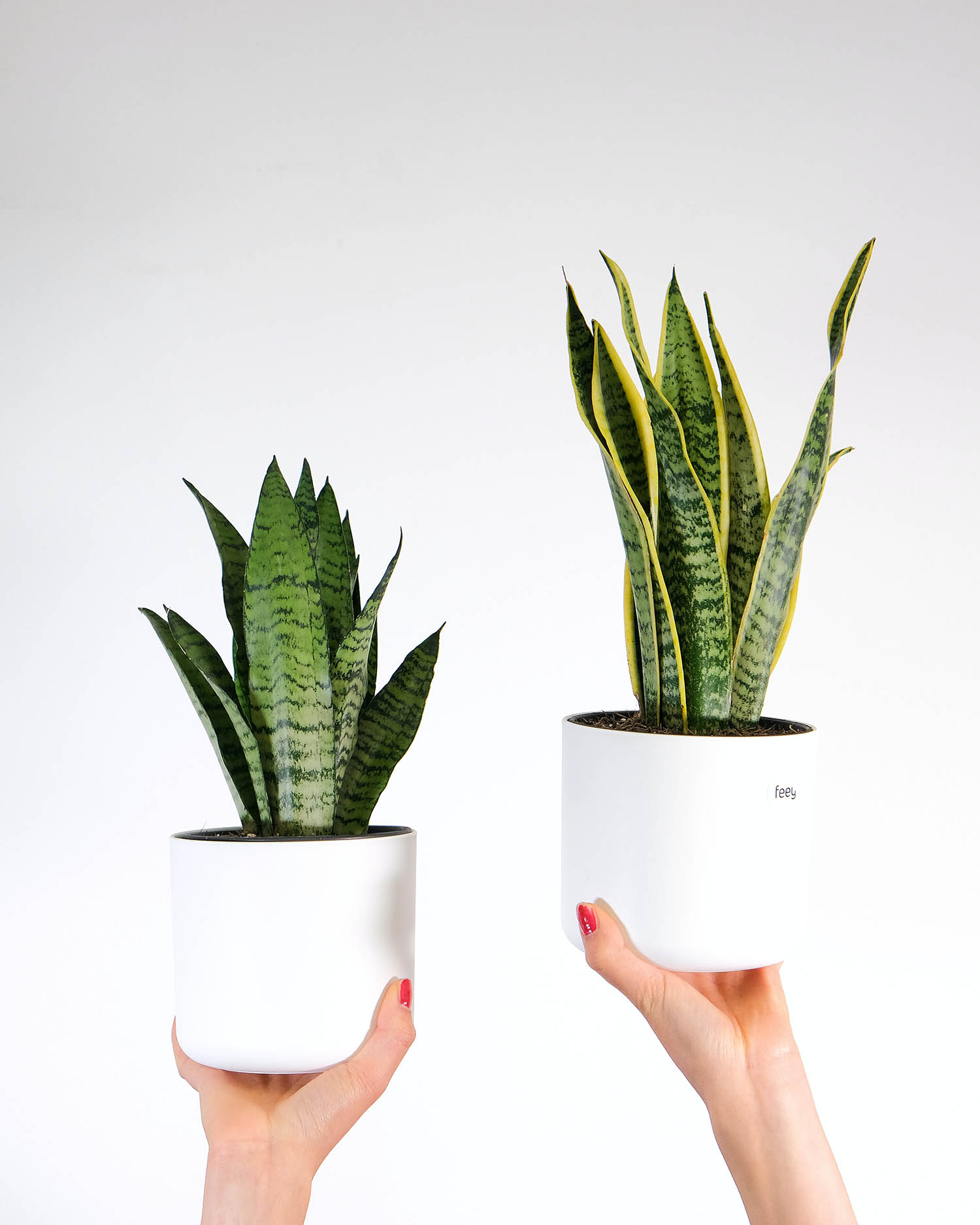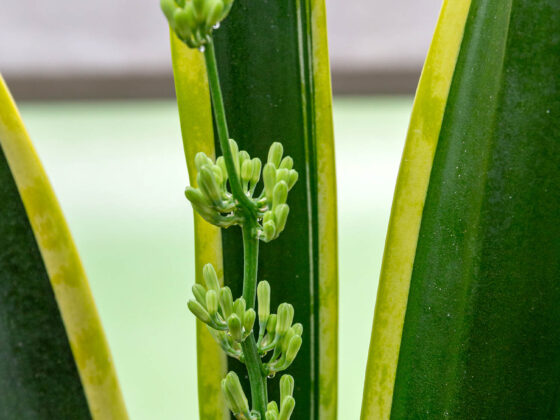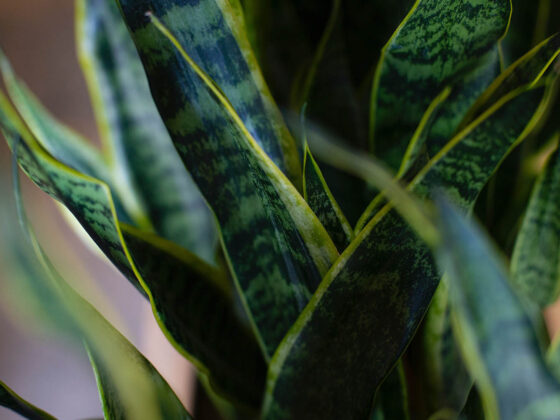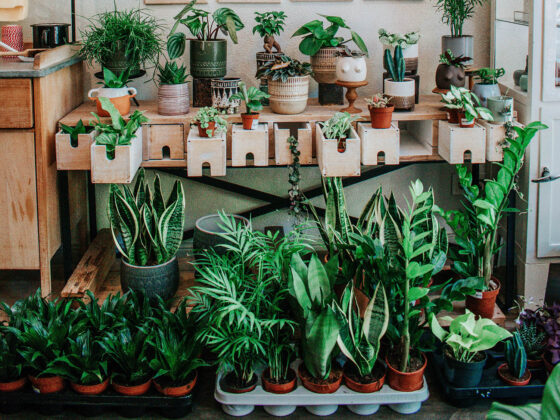A note on names: In scientific circles, Snake Plants are now considered part of the Dracaena genus, and the name Sansevieria has been retired. However, many people still know these plants by their former name, so we’ll sometimes refer to them as Sansevierias. We have an article on the subject here.
Snake plants are known for being easy to raise, but some houseplant owners crave a challenge. They devote their efforts to collecting rare and distinctive Sansevieria cultivars rather than sticking with the ones they already know. This article will spotlight some cool and hard-to-find Snake Plants for those who prize variety.
Snake Plants come in a wide variety of sizes, shapes, and color patterns. Some of the rarer varieties include Kirkii Coppertone, Fischeri Singularis, and Green Mermaid. Other cultivars like Moonshine and Night Owl were once rare but can now be found readily online.
Remember that some well-known varieties are patented; if you buy one of these, you won’t be able to propagate and sell it as you would with another type.
You’ll often have to go to smaller sellers to find rare plants, so be sure to check reviews to make sure you’re buying from someone reliable. If you’re buying online, watch out for comments-about damage during shipping – not all sellers take adequate protective measures. Of course, it’s pretty hard to guarantee that your Snake Plant will be 100% free from harm in transit, so be prepared to do a little plant rehab when it arrives.
Are Snake Plants Rare?
Certain varieties of Snake Plants are so common that you can find them in the garden section of practically any large grocery or home improvement store. However, these well-known varieties only represent a tiny fraction of the diversity you can find among Snake Plants. Most of them are cultivars of just one species: Dracaena trifasciata (formerly Sansevieria trifasciata – see this article for more information).
The classic Snake Plant look that you often see in offices, hotel lobbies, and other public spaces, is a variety of D. trifasciata called Laurentii. Its most notable feature is the thick band of bright yellow running up each edge. Other common Snake Plants include:
- Superba. Quite similar to the Laurentii, but with wider leaves and thinner, subtler yellow edging.
- Zeylanica. Lacks the yellow edges of Superba or Laurentii, instead emphasizing the contrast between light and dark green in its horizontal bands.
- Cylindrica. This is one of many Snake Plants that feature leaves shaped like conical tubes instead of flat blades. Some owners like to braid the strands together for a cool twisty look. The Cylindrica is also called the African Spear Plant or St. Barbara’s sword.
- Starfish. Here’s the dwarf variety of the Cylindrica. The official name for this cultivar is the Boncel, but “Starfish” really captures the look of this plant.
- Golden Hahnii. This is another popular compact Snake Plant. It looks a little like the Laurentii, but its coloration is lighter, with more lemon-lime hues.
Rare Snake Plants
Once you look past the well-known Snake Plant varieties we mentioned above, you’ll start learning about much less common varieties. Here are some rare and exciting Sansevieria cultivars for the aspiring collector:
Kirkii Coppertone
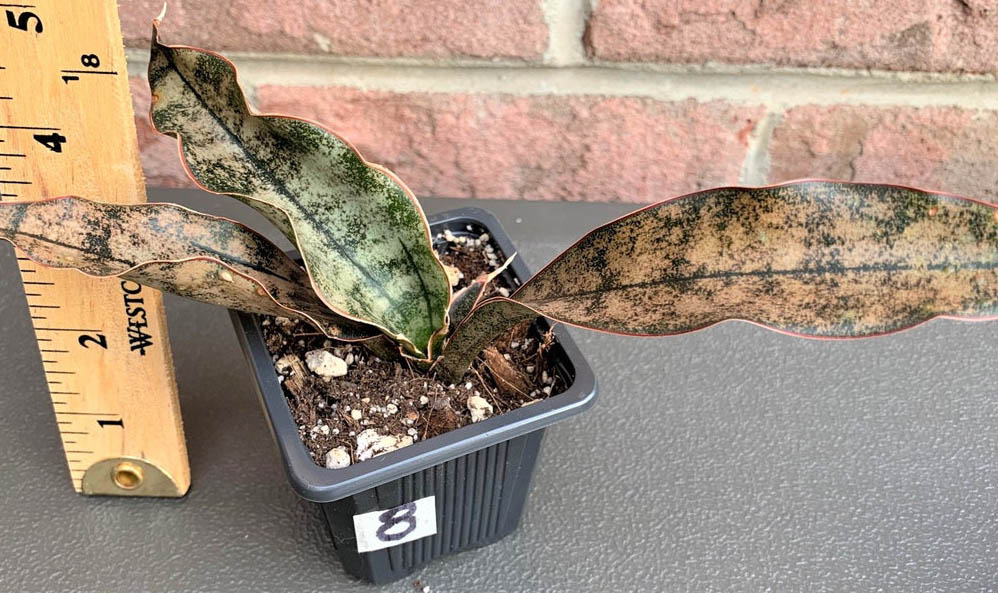
Until recently, this cultivar of the Kirkii pulchra Snake Plant was virtually unknown, but it’s begun to attract some attention for its unique coloration. Instead of the usual stripes of deep green and pale greenish-yellow, this plant has a faintly shiny exterior mottled with orange-brown spots, making it look like tarnished bronze or copper.
The effect is reinforced by the wavy edges of its leaves, as though it’s a sculpture made of crimped metal rather than a living plant. This variety looks especially cool in a terra cotta pot that emphasizes the earthy tones of the foliage.
Fischeri Singularis
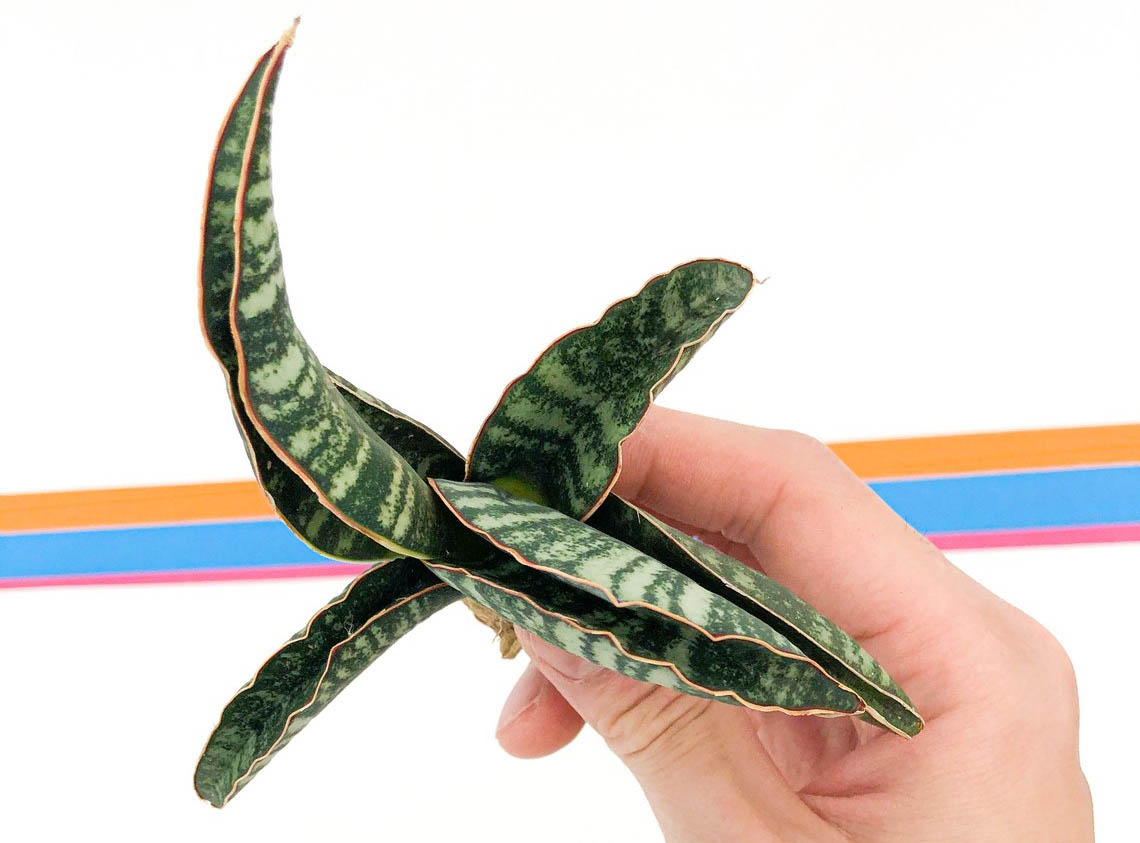
Here’s another twist on the Snake Plant look: the leaves of the Fischeri grow in a taco shape halfway between the flat foliage of a Laurentii and the round tubes of a Cylindrica. They splay outward to reach past the edges of the pot, creating a fun, slightly unruly appearance.
This growth pattern isn’t unique to the Fischeri – some more common varieties like the Samurai Dwarf do the same thing – but the vivid contrast of its green and gray stripes makes this plant stand out. The Singularis cultivar includes a thin stripe of bright red accenting the upper edges of the leaves.
Green Mermaid
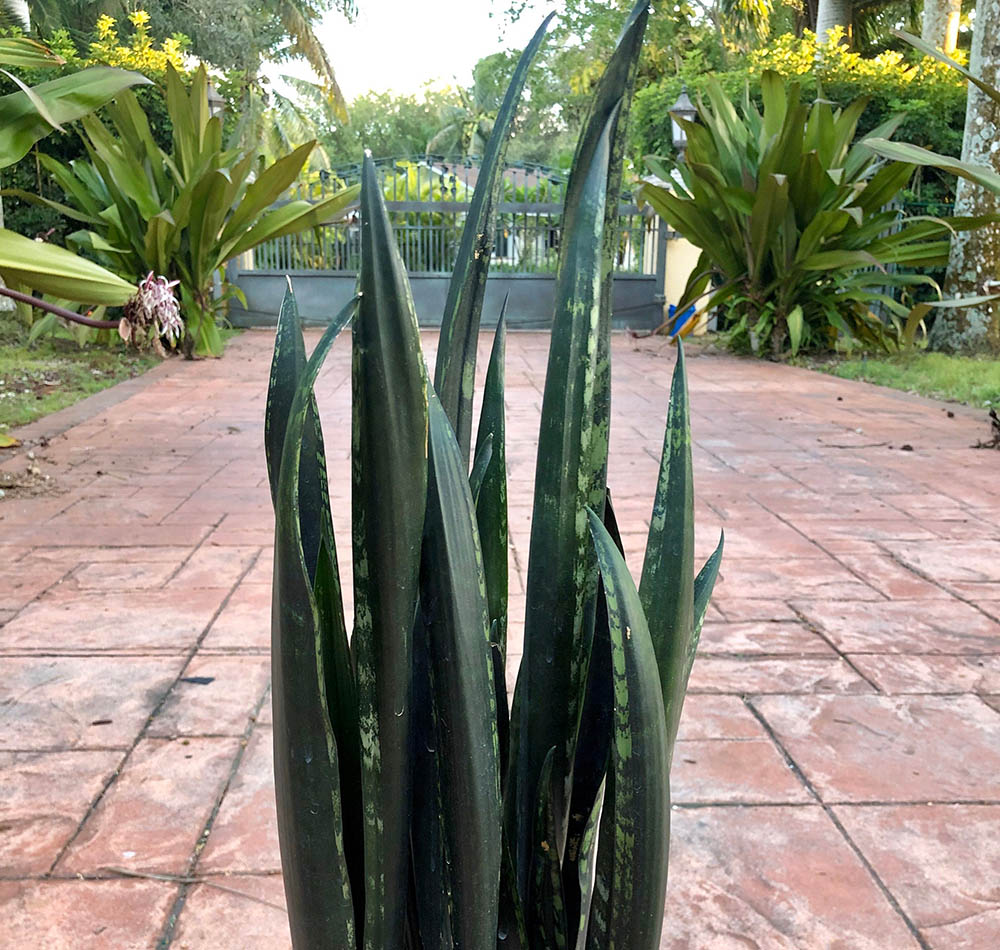
This Snake Plant has upright, blade-shaped leaves like many of its more common cousins, but they curve inward so that the fold on the back faces out. The inner portion of the leaves is solid green, with lighter horizontal stripes of alternating dark green and gray-green running along the edges.
The Green Mermaid looks a lot like the slightly more widespread Whitney cultivar, but the leaves are narrower and the variegation is paler.
Patens
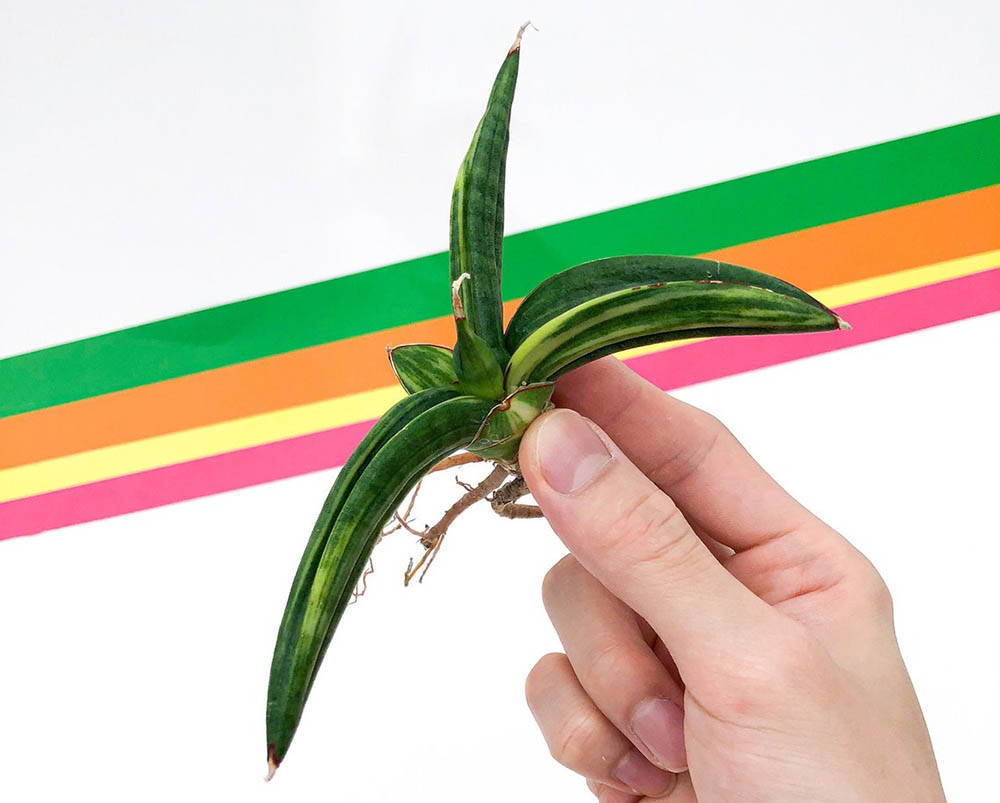
The leaves of Dracaena patens form v-shapes much like those of the Fischeri, but they don’t tend to open as much; from some angles, this cultivar looks more like a Starfish Snake Plant. The foliage can grow quite long, forming sinuous tendrils that drape well past the edges of the pot. The Patens also has rounded ridges along the length of its leaves that make them look like bundles of smaller tubes.
Walking Sansevieria
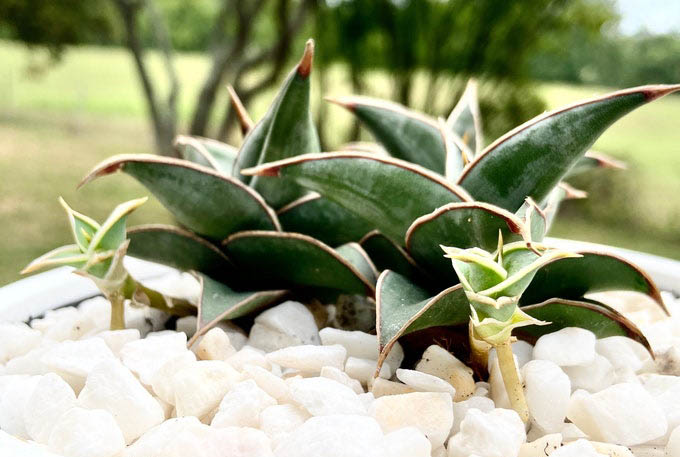
This dwarf cultivar’s official name is Dracaena pinguicula (often still called Sansevieria pinguicula). It looks a lot like the Fischeri Singularis, complete with the red edges on the leaves, but its color tends to be lighter, with more of a bluish-gray tint.
The really interesting thing about this plant is the way it spreads. Most Snake Plants extend rhizomes underground and push up new rosettes a little ways away from the main plant. The Walking Sansevieria does away with the subtlety and pushes new stems out along the surface, allowing you to see the connections between different clusters of leaves.
In time, a single D. pinguicula can turn into a whole network of interconnected clones. The roots push out of the soil to hold the spiky little bursts of foliage up in the air, making them look almost like weird fantasy creatures walking on slender legs.
Formerly Rare Snake Plants
Snake Plants are fairly easy to propagate, so even the rare varieties don’t always stay rare for long. When a particular cultivar becomes well-known among collectors, it creates an incentive for people to breed and sell it. In a few short years, a plant that used to be confined to exotic nurseries may be widely available.
Here are a few Sansevierias that used to be quite rare, but are now fairly easy to find online:
- Moonshine. Forms wide leaves with a misty gray tinge.
- Night Owl. Looks almost like a photo negative of a classic Snake Plant, with pale gray-green leaves crisscrossed by darker zigzags.
- Samurai Dwarf. This is basically a cool miniature version of the Fischeri we mentioned above.
- Sayuri. Tall, flat leaves with pale, slender stripes.
None of these Snake Plants are so common that you can walk into your local Home Depot and find one on the shelf, but you can find tons of them on the internet with a quick Google search. As a bonus, they’re no longer rare collector’s items, so you can buy them without breaking the bank.
Where to Find Rare Snake Plants
As we’ve noted, the internet is by far the easiest place to find uncommon Sansevieria cultivars. Huge online marketplaces like Amazon aren’t your best bet, though – we recommend sites like Etsy where hobbyists and small nurseries offer niche goods. Always take a look at the reviews of the sellers before buying, though. Not all of them package plants correctly, and you don’t want your Snake Plant to be damaged or killed on its way to you.
There are also lots of boutique nurseries with robust online stores. You may even be able to find one based in your area, letting you save on shipping.
Of course, if you’re interested in buying local, you can always look for brick and mortar plant stores nearby! It’s harder to guarantee that they’ll have exactly what you’re looking for, but browsing through the collection at a garden store may introduce you to varieties you haven’t even heard of.
Those interested in really digging into the plant collector lifestyle may want to get active in online forums like Houzz, Reddit, or GardenWeb. These sites host lots of enthusiastic communities dedicated to sharing information on houseplants. It’s often possible to arrange for plant swaps – or even find people offering up clones for free.
The plants we’ve named above are only a tiny cross-section of the many Snake Plant varieties out there. As you get hooked on collecting them, you’ll discover many more! We wish you luck in filling your home with the coolest, rarest Sansevierias you can find.






